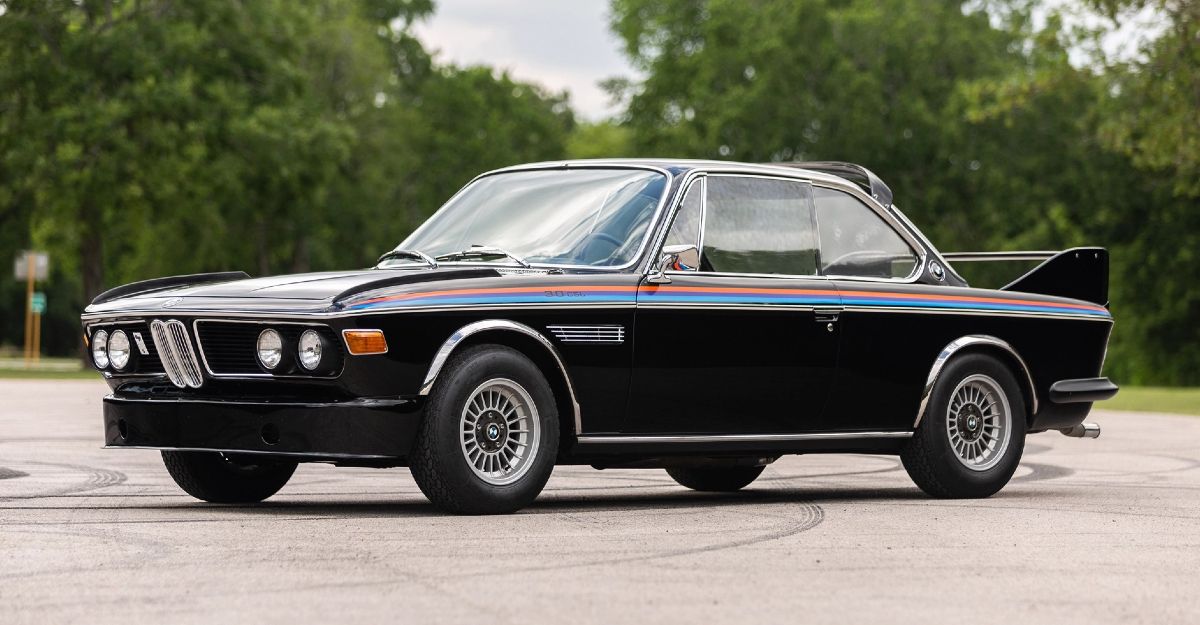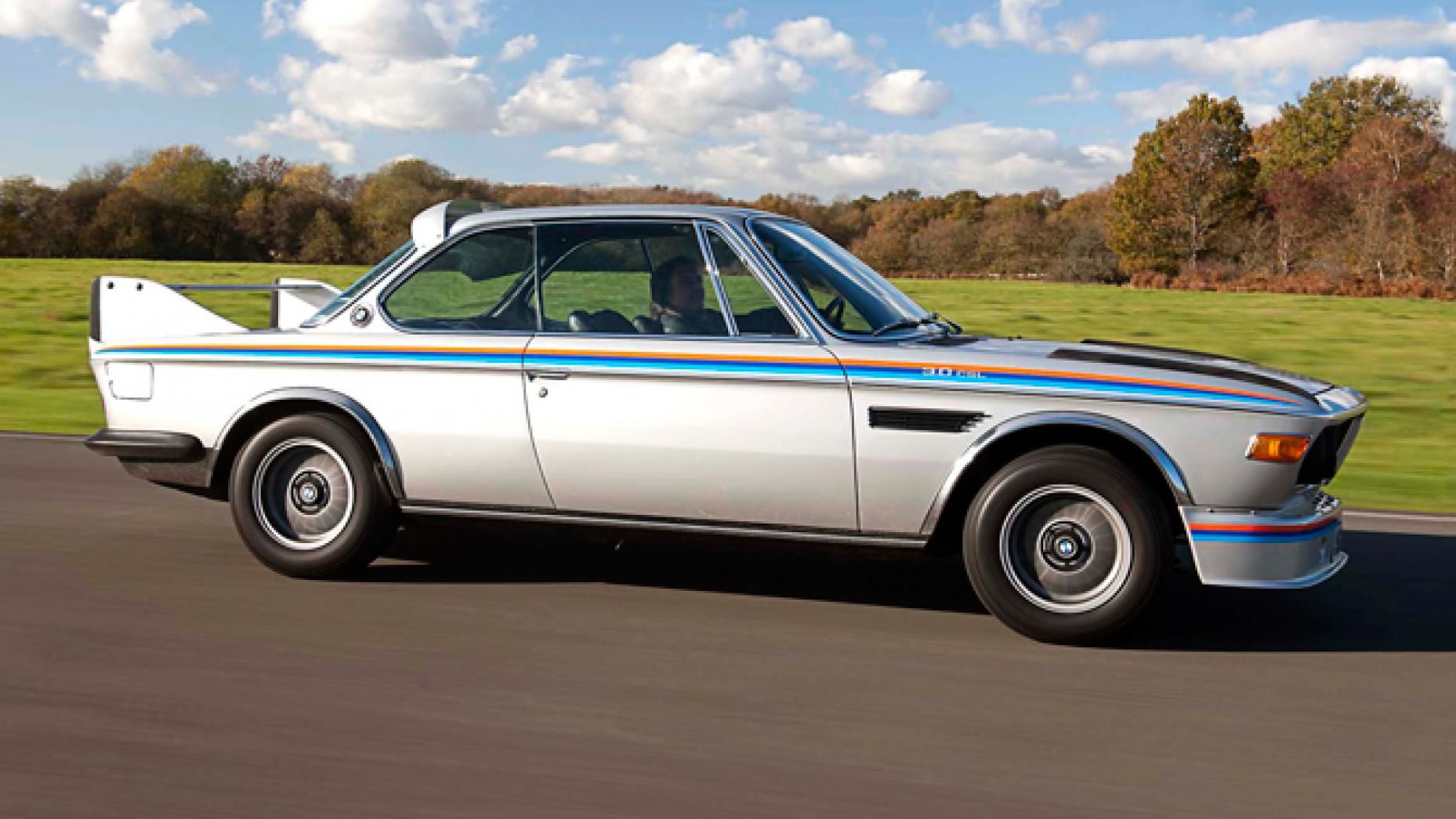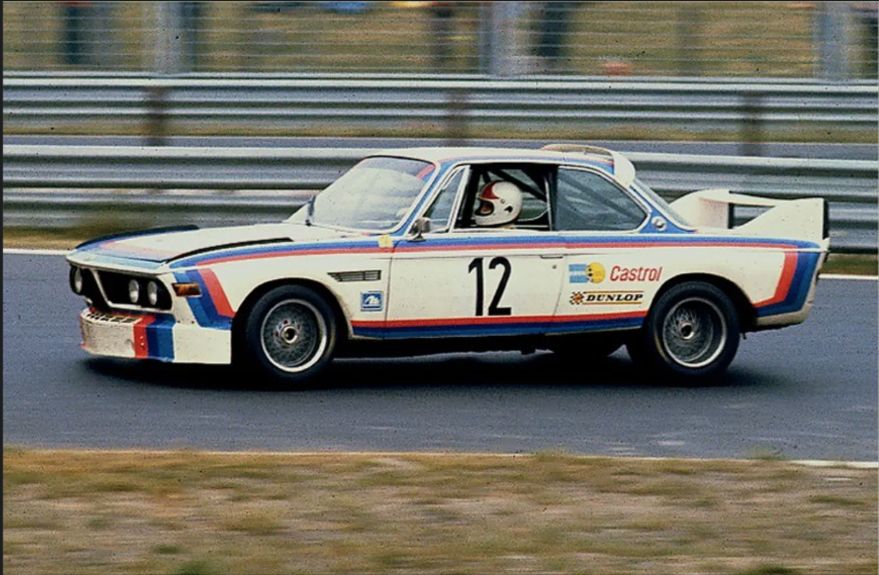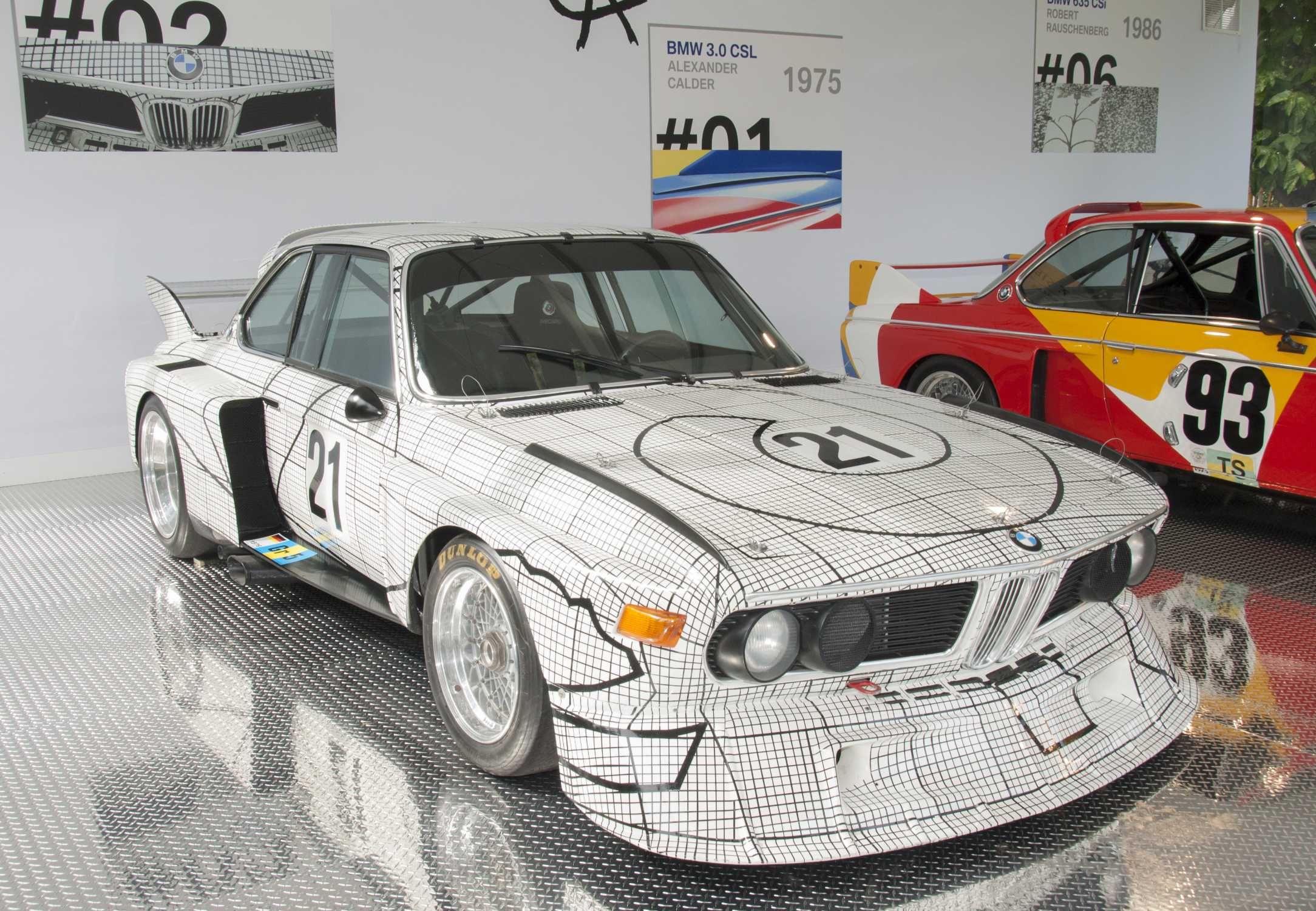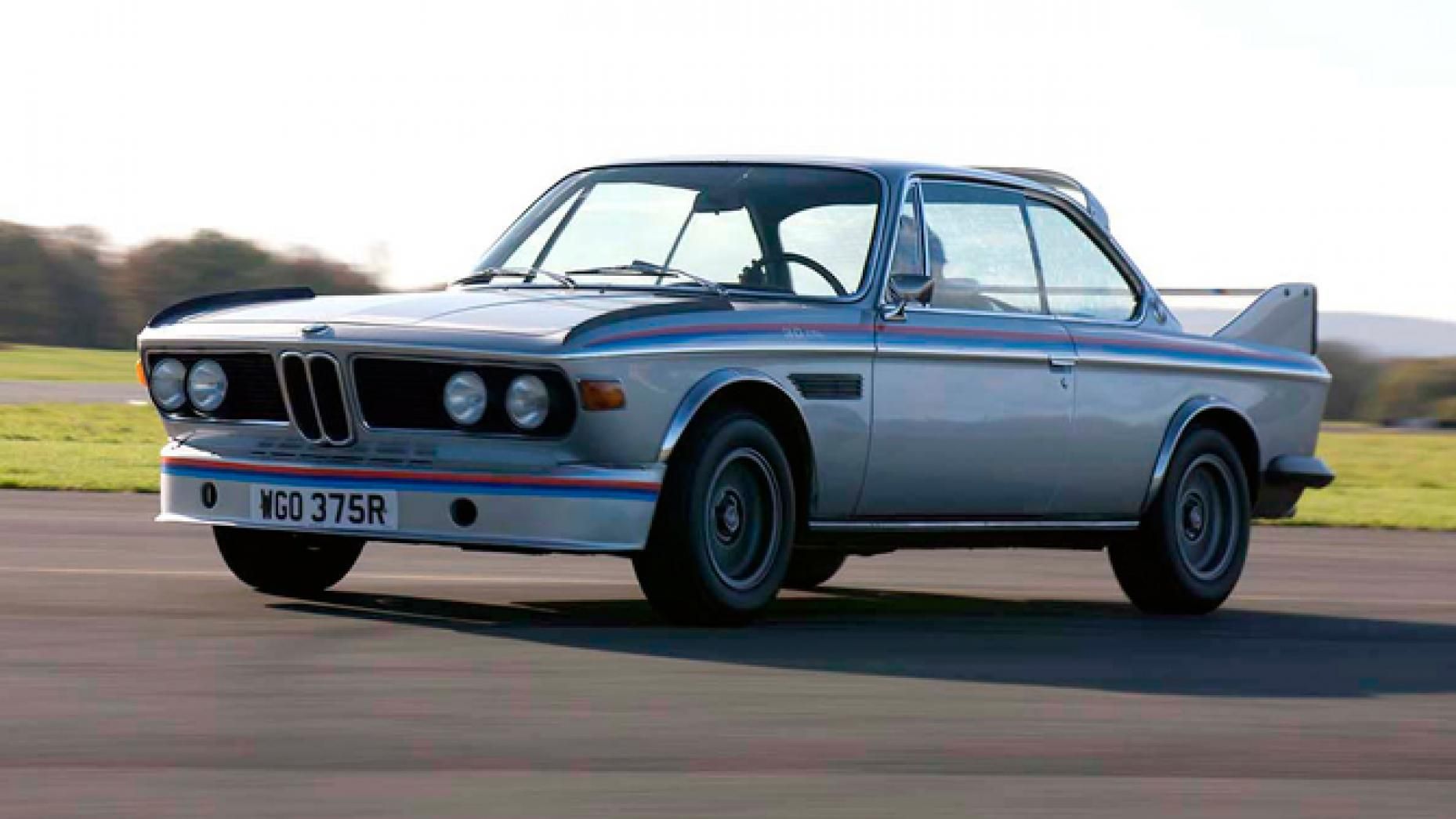BMW’s very first professional racing car, the 3.0 CSL, is arguably the most important model in the iconic German brand’s history. Following the devastation of World War II and the Soviet takeover of some of its facilities, BMW was in a major financial crisis by the mid-1950s, and its future seemed in grave peril. But things started looking up after the automaker introduced its New Class series in the early 1960s—and that brings us to the 3.0 CSL, which was by far and away the most successful of BMW’s New Class cars, helping to put the manufacturer back in the black and almost single-handedly creating its now-established reputation for high-performance sports cars.
The 3.0 CSL was first unveiled in May 1972, and just about a year later, its final iteration, the “Batmobile” (as it was affectionately dubbed for its daring, aggressive design and then-unparalleled speed) was homologated for racing in July 1973. The Batmobile didn’t just turn heads—it ended up taking the European Touring Car Championship by storm. The BMW 3.0 CSL Batmobile won the ETC in 1973 and didn’t stop there, going on to triumph over that contest every year from 1975 to 1979.
While the car’s look, with its muscular body, front and rear wings, fins, and racing stripes might appear a little naïve to today’s racing enthusiast, the Batmobile was an extraordinary feat for its time, and still manages to impress today (for those lucky enough to get the chance to drive one.) BMW even honored its pioneering racer with an updated “Hommage” version in 2015, thus ensuring this iconic car would also be a part of the brand’s future.
For aspiring experts on automotive history and appreciators of fine sports cars alike, here’s a rundown of everything you need to know about the BMW 3.0 CSL Batmobile.
The 3.0 CSL Changed The Course Of Fate For BMW
Following World War II and its aftermath—which saw the bombing of several BMW factories, followed by the temporary banning of BMW from manufacturing automobiles altogether by the victorious Allied powers, and ultimately the seizure of some BMW facilities in the newly-designated state of East Germany by the Soviets—the carmaker was struggling to get back on its feet.
Though BMW was able to start producing cars again by the early 1950s, some models of which were even starting to sell well, the devastation of the previous decades had taken its toll and by 1959, the company was in serious trouble and was nearly forced into a merger with Mercedes. But the following year, BMW threw a hail mary by entering into development for a fleet of so-called “New Class” sports sedans. These New Class cars hit the market in 1962 to immediate success, effectively pulling the manufacturer away from death’s door just in the nick of time.
In fact, BMW’s success with sports cars was such that the brand began to seriously contemplate entering the racing world, to which end, in 1972 it established a new, wholly BMW-owned subsidiary called BMW Motorsport GmbH to further its activities in that arena. The new organization got off to a dazzling start by immediately introducing the 3.0 CSL in May of that year as a “homologation special” produced in limited numbers to help BMW be deemed eligible for racing competition in Europe.
The Batmobile represents the apotheosis of BMW’s 3.0 CSL concept and was not only the car that finally let the brand put the pedal to the metal on the track, but would go on to become the superstar par excellence of the entire New Class fleet, forever cementing BMW’s identity as a maker of sporty, thrilling, high-performance vehicles.
A Racing-Fantasy Look, Plus Real Performance
BMW’s first iteration of the 3.0 CSL was based on the brand’s 3.0 sports coupe, as Tony Lewin wrote in The BMW Century, but with an engine that had been overbored to 3,003cc to make the car eligible to compete in the over-3-liter class at the European Touring Car Championship. They also lightened the load by making the hood, trunk lid, and doors in aluminum, hence the “L” in the model’s name.
For the Batmobile, unveiled in 1973 a first-series run of 110 models, BMW’s engineers increased the stroke to power the engine all the way up to 3,153cc and 206bhp. Notably, to create the Batmobile, they also added to the 3.0 CSL concept a dramatic array of design touches, including a front spoiler and short roof spoiler, front wings equipped with their own fins running along the top, and an eye-catching, impressively-sized three-piece rear wing (fun fact: when sold from the factory, the Batmobiles came with the rear wing and the chrome flares packed into the trunk of the car, for its happy new driver to fit on by themselves). They came out of the factory in gleaming Chamonix Metallic White (085), with red-and-black Scheel sports seats gracing the interior, as well as a unique three-arm steering wheel.
When Richard Hammond got to test drive an original Batmobile for Top Gear, he found the car’s speed-racer-fantasy look faintly ridiculous, especially the air guides running along the front wings. But he confirmed the car runs like a beauty, even today, with its serious but lightweight body kit, powerfully roaring engine, and “silky-smooth” handling.
Indeed, throughout the 1970s—even after production ceased in 1975—the Batmobile proved itself a champion of the racetrack several times over, dominating the European Touring Car Championship several years in a row, sweeping Le Mans 24 Hours with back-to-back wins in 1973 and 1974, and triumphing in several other national races, ultimately becoming one of the highest-performing production racers of its time.
The 3.0 CSL Was Also BMW’s First “Art Car”
Already by 1975, the BMW Batmobile had attained such a mythological status that one racer—a certain Hervé Poulain by name—decided to turn it into a literal work of art. He commissioned American artist Alexander Calder to paint his 3.0 CSL with a sophisticated, high-concept custom design in advance of the 1975 Le Mans (a race, it must be noted, famed at least in part for the good-looking cars that have competed in it)—and thus was born the now-storied tradition of the BMW “Art Car.” The Calder edition was swiftly followed by yet another paragon of modern art history, Frank Stella, adorning yet another BMW 3.0 CSL Batmobile in 1976.
This Batmobile Cost As Much As A House—Today, It’s Worth Even More
The BMW 3.0 CSL Batmobile was designed with the racetrack in mind—but it was also uniquely targeted at only the most elite of elite consumers. It was never sold in the United States, but to give an idea of its MSRP, when it was first exported to the UK back in 1973, it retailed at £6,399, which was nearly the average cost of buying a house in that country at the time. Today, given the Batmobile’s legendary, iconic status, not to mention its rarity, it’s unlikely a classic car enthusiast could get their eager hands on one for less than at least $100,000.

